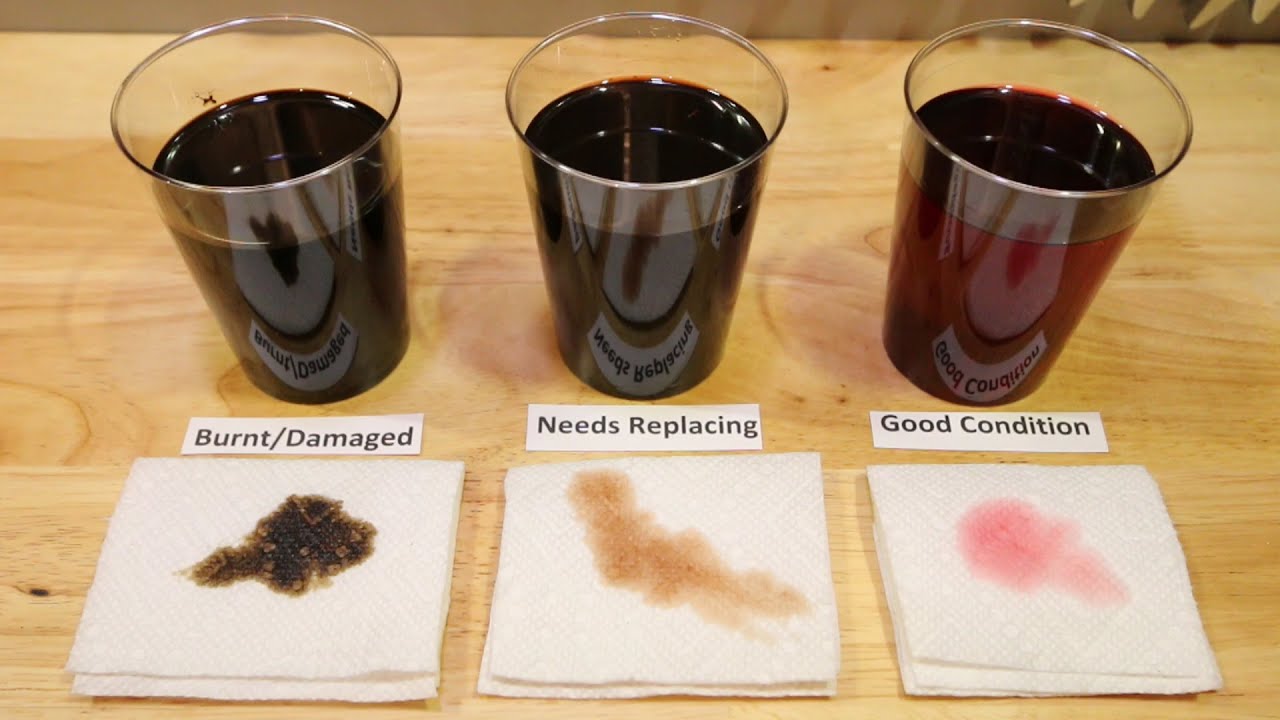Transmission fluid needs to be changed regularly in order to keep your car running properly. Signs that it may need changing include transmission slipping, poor shifting, or a burning smell coming from the engine bay. If any of these signs are present, it’s important to have your transmission fluid checked and potentially replaced.
Another sign is if you notice metal flakes in the oil pan when you drain the fluid; this indicates wear on internal components which can lead to more serious issues if not addressed promptly. Additionally, if you haven’t had your transmission serviced recently (usually every 30-50k miles) then it is likely time for a change as well.
Transmission fluid is an important part of any vehicle’s maintenance. Regularly checking and replacing the transmission fluid can help prevent future problems with your car. Signs that you may need to change your transmission fluid include a burning smell, noises coming from the transmission area, or trouble shifting gears.
If you notice any of these signs, it’s best to take your car into a qualified mechanic for a check-up as soon as possible so you can prevent further damage to your vehicle.
Should I Change My Transmission Fluid?
Does Changing Transmission Fluid Help Shifting
Changing the transmission fluid in your vehicle can help improve shifting performance. By replacing old, worn-out fluids with new transmission fluid, you are able to ensure that the gears and components of your car’s transmission system are well lubricated and functioning properly. This helps reduce any potential wear or damage caused by friction between moving parts, resulting in smoother shifts and improved overall performance.
How Often to Change Automatic Transmission Fluid
Most auto manufacturers recommend changing the automatic transmission fluid every 50,000-100,000 miles depending on your vehicle. However, it is important to check with your owner’s manual or service center for specific information about when to change the fluid in your particular make and model of car. If you drive in stop-and-go traffic or tow a trailer regularly, then more frequent fluid changes may be necessary.
How Many Years Does Transmission Fluid Last
Transmission fluid is designed to last significantly longer than motor oil – up to 100,000 miles or more in some cases. However, the exact lifespan of your transmission fluid will depend on several factors such as driving conditions and vehicle maintenance habits. It’s important to have a professional check your transmission fluid regularly and replace it when needed to keep your vehicle running smoothly.
Signs of Low Transmission Fluid Automatic
Low transmission fluid can be a sign of trouble for the automatic transmission system in your vehicle. If you notice that your transmission is struggling to shift gears, or if it’s making unusual noises, then this could be a sign that you need to check and replace your transmission fluid. Other signs include an illuminated warning light on your dashboard, jerking or slipping when shifting gears, leaking fluid from the pan gasket, and a burning smell coming from underneath the car.
By addressing these issues early on with new transmission fluid, you can help prevent larger issues down the line!

Credit: blog.rainbowmuffler.net
How Do I Know If I Need to Change My Transmission Fluid?
If you’re unsure if it’s time to change your transmission fluid, there are a few signs that could indicate it is necessary. If you notice any difficulty when shifting gears or strange noises coming from the transmission area, this could be an indication of a problem with the transmission fluid. In addition, if your car does not seem to shift as smoothly as usual or hesitates when trying to accelerate, these can also be indicators that your transmission fluid needs changing.
Furthermore, if you see dark colored liquid underneath your car after it has been parked for a while and smell burning coming from the vehicle, these are both strong indicators that something is wrong with the transmission and should be checked out immediately by a professional mechanic.
What are the Symptoms of Dirty Transmission Fluid?
Dirty transmission fluid can cause a variety of symptoms, including rough shifting, slipping gears, lack of power while accelerating, and jerking or shuddering when driving. It can also lead to increased fuel consumption due to the transmission having to work harder than necessary in order to shift properly. Additionally, you may experience an overall decrease in performance as well as loud noises coming from the vehicle’s engine bay.
If left untreated for too long, dirty transmission fluid can even damage other parts within your car’s drivetrain such as the torque converter or differential. Therefore it is important that you maintain your vehicle regularly and check your transmission fluid levels on a regular basis in order to avoid any potential problems down the road.
What Happens If I Dont Change My Transmission Fluid?
If you don’t change your transmission fluid, it can lead to serious damage to your transmission. Over time, the fluid becomes contaminated with dirt and metal particles that accumulate in the system and cause friction. This increased friction will eventually put extra strain on other components of the transmission such as gears, seals, clutches, and bearings.
Without clean transmission fluid lubricating these parts they will wear out much faster than normal leading to a breakdown or costly repairs. Additionally, not changing your transmission fluid could also lead to poor performance from your vehicle due to slippage or hard shifts caused by lack of lubrication. All in all, not changing your transmission fluid is a surefire way for premature failure of one of the most important systems in any car so make sure you stay up on regular maintenance!
How Often Should Transmission Fluid Be Changed?
Transmission fluid should be changed every 30,000 to 60,000 miles. However, if you drive in stop-and-go traffic or tow heavy trailers, then it is recommended that the transmission fluid be changed more often. Additionally, most manufacturers suggest changing the filter along with the fluid when performing maintenance on your vehicle’s transmission system.
Finally, depending upon your make and model of car and its age you might consider a complete flush of the entire system as well.
Conclusion
In conclusion, it is important to be aware of the signs that indicate a need for transmission fluid change. Early detection can prevent costly repairs and help keep your vehicle running efficiently. Regular maintenance and inspections are key in ensuring you have a smooth ride without any unexpected breakdowns or malfunctions.
By keeping an eye out for these warning signs, you can save yourself time, money, and hassle in the long run.


